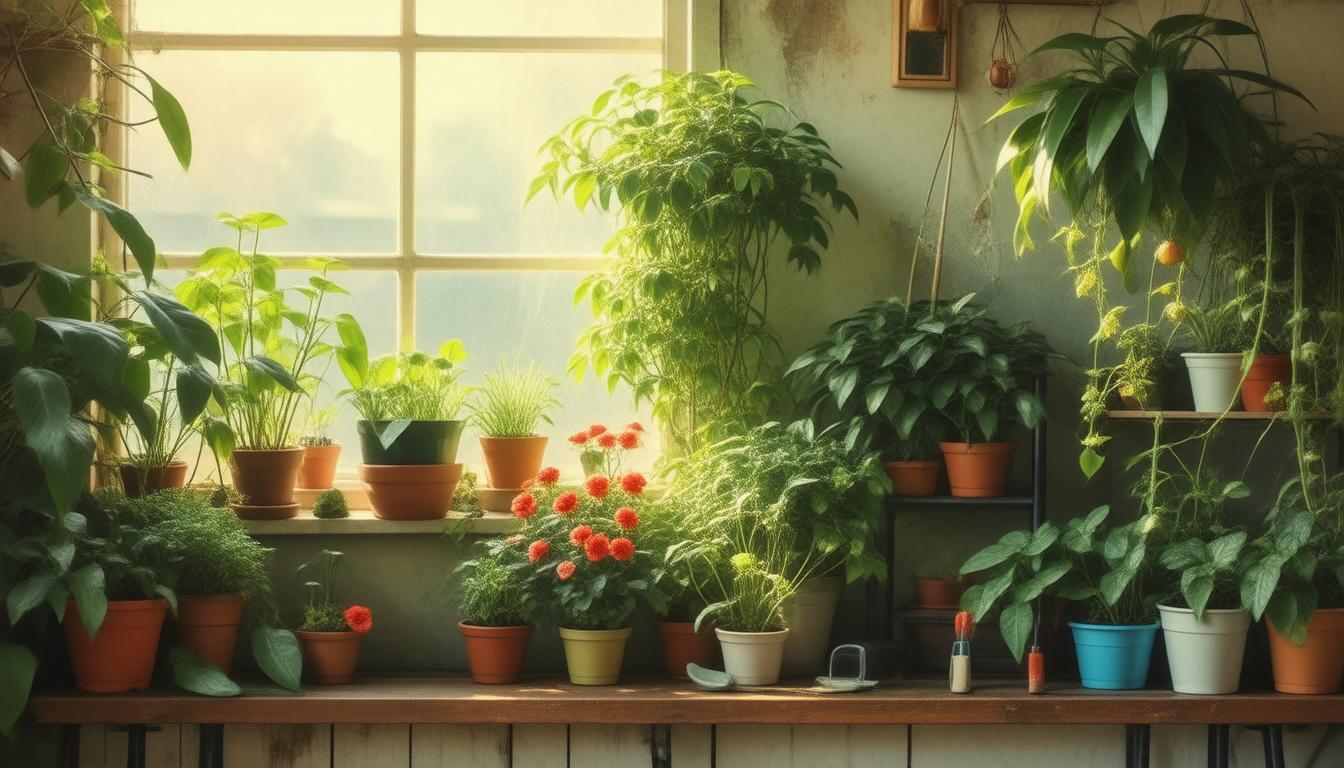Indoor plants can bring life to our homes, improve air quality, and even boost our mood. However, keeping them healthy and vibrant can sometimes be a challenge. If you’re looking to breathe new life into your greenery, you’re in the right place. In this article, we’ll explore how to revive your indoor plants today with these expert-approved tips. From understanding their needs to choosing the right environment and addressing common pests, we’ll cover everything you need to ensure your plants thrive.
Key Takeaways
- Understanding the specific light and humidity needs of your indoor plants is essential for their survival.
- Selecting the right placement for your plants can greatly influence their growth and health.
- Proper watering techniques, including knowing when and how much to water, are crucial for prevent over or under-watering.
- Regular fertilization with appropriate nutrients can enhance your plants’ vitality and growth potential.
- Identifying and managing common pests promptly can protect your indoor garden from damage.
Understanding Indoor Plant Needs
Reviving your indoor plants can seem daunting, but understanding their specific needs is the first step toward a thriving indoor garden. Each species has unique requirements for light, water, and humidity, and recognizing these can transform your plant care routine. For instance, succulents and cacti thrive in bright, direct sunlight and require minimal watering, while ferns and peace lilies prefer indirect light and consistently moist soil. By adjusting your care practices accordingly, you can breathe new life into your greenery. Revive your indoor plants today with these expert-approved tips, such as investing in a moisture meter to avoid overwatering—a common pitfall for many plant enthusiasts. Additionally, rotating your plants regularly ensures even growth and exposure to sunlight. With a little attention and the right techniques, your indoor plants will not only survive but flourish.
Choosing the Right Environment
Choosing the right environment for your indoor plants is crucial to ensure they thrive and flourish. To revive your indoor plants today with these expert-approved tips, start by assessing the light conditions in your home. Different plants have varying light requirements; for instance, succulents and cacti prefer bright, direct light, while ferns and snake plants thrive in low light. Additionally, consider the humidity levels in your space—tropical plants generally enjoy higher humidity, so placing them in a kitchen or bathroom can be beneficial. Moreover, temperature stability is key; avoid areas with drafts or extreme temperature fluctuations. By creating an ideal environment tailored to the specific needs of your plants, you’ll not only boost their health but also enhance their aesthetic appeal in your home.
‘Plants are like people. They respond to kindness. They thrive when you take a little time to understand their needs.’ – Unknown
Watering Techniques for Healthy Growth
Watering techniques play a crucial role in ensuring the healthy growth of your indoor plants. To truly revive your indoor plants today with these expert-approved tips, it’s essential to understand the watering needs of each species you care for, as they can vary widely. First and foremost, check the soil moisture level by sticking your finger about an inch into the soil; if it feels dry, it’s time to water. Opt for deep watering rather than light, frequent sprinkling to encourage strong root development. Additionally, consider using room-temperature water, as cold water can shock roots and hinder growth. Moreover, it’s beneficial to water in the morning so the plants have ample time to absorb moisture throughout the day. Lastly, always ensure that your pots have drainage holes to prevent waterlogging, which can lead to root rot. Implementing these watering techniques will not only help you revive your indoor plants today but also foster a thriving indoor garden for years to come.
Fertilizing for Optimal Nourishment
Fertilizing for optimal nourishment is crucial if you want to revive your indoor plants today with these expert-approved tips. Understanding the unique nutritional needs of your indoor flora can significantly enhance their growth and vigor. Start by selecting the right fertilizer—look for one that contains a balance of nitrogen, phosphorus, and potassium to promote overall health. Additionally, opt for organic fertilizers, which release nutrients slowly and improve soil structure. Make sure to apply the fertilizer during the growing season, typically in spring and summer, to provide your plants with the necessary energy for robust growth. Remember to follow the recommended dosage on the label, as over-fertilizing can lead to root burn and other complications. Regularly check your plants for signs of nutrient deficiency, such as yellowing leaves or stunted growth, and adjust your feeding routine accordingly. By paying close attention to your indoor plants’ needs and fertilizing wisely, you can truly revive them and enjoy a thriving indoor garden.
Common Pests and How to Handle Them
Houseplants can be a delightful addition to your home, but they often attract common pests that can hinder their growth. If you’ve noticed tiny insects or unsightly webs on your beloved greenery, it’s time to take action. Revive your indoor plants today with these expert-approved tips to combat these nuisances effectively. Start by identifying the common pests such as spider mites, aphids, and mealybugs. For example, spider mites thrive in low humidity and can be eradicated by increasing humidity levels and regularly misting your plants. Meanwhile, aphids can be treated with a gentle spray of insecticidal soap or diluted neem oil. Regular monitoring and maintaining proper care routines not only help prevent infestations but also keep your plants healthy. By employing these techniques, you can ensure that your indoor garden remains vibrant and pest-free.
Revitalizing Wilting Plants: Step-by-Step Guide
Reviving wilting plants can be both a rewarding and straightforward endeavor if approached with the right techniques. If you’ve ever looked at your drooping indoor foliage and felt disheartened, don’t worry—there’s hope! To help you revive your indoor plants today with these expert-approved tips, start by assessing the situation. First, check the soil moisture; often, wilting is a sign of either overwatering or underwatering. If the soil feels dry, give your plant a thorough drink, ensuring the water drains out of the bottom. Conversely, if it’s soggy, consider repotting into fresh, dry soil to improve drainage. Next, evaluate the lighting conditions—plants deprived of sunlight may not thrive, so move them to a brighter spot if necessary. Additionally, examine for pests or diseases; catching these issues early is key in restoring your plant’s health. Lastly, introducing a balanced, organic fertilizer can give your plants the nutrients they need to bounce back. With these simple yet effective actions, you can breathe life back into your indoor plants, ensuring they flourish once again.
Frequently Asked Questions
What are the basic needs of indoor plants?
Indoor plants generally require proper light, humidity, temperature, and watering. Understanding the specific needs of your plants is essential for their health.
How can I tell if my indoor plant has the right environment?
Check for signs like leaf discoloration, stunted growth, or wilting. These can indicate that your plant is not receiving adequate light, humidity, or temperature.
What are the best watering techniques for indoor plants?
Water your plants according to their specific needs. Over-watering can lead to root rot, while under-watering causes wilting. Ensure the pot has drainage holes and water when the top inch of soil feels dry.
How often should I fertilize my indoor plants?
Fertilizing frequency varies based on the plant type, but generally, every 4-6 weeks during the growing season (spring and summer) is recommended. Use a balanced, water-soluble fertilizer.
What steps should I take if my indoor plants start wilting?
Assess their environment, check for pests, adjust watering, and provide adequate light. Follow a step-by-step revitalization guide to address the specific causes of wilting.




